Coordinator: Antonello Ortolan
Phone: 049 8068421
Mail: antonello.ortolan@lnl.infn.it
CSN2 manages and finances experiments related to astro-particle physics. It is divided into the study of the properties of neutrinos, dark matter and energy and gravitational waves. It addresses issues such as the matter-antimatter relationship in the Universe, cosmic phenomena, the constitution of matter and the effects of general relativity and quantum mechanics.
The Legnaro Laboratories have a long tradition of experiments in the research areas of Astroparticle, Neutrino and Quantum Physics without the use of particle accelerators. In particular, experiments exploring the low energy frontier of particle or field detection. Active experiments range from the study of neutrino physics (CUORE/CUPID, T2K) to the search for dark matter (QUAX, DARK SIDE) and the investigation of quantum vacuum (VMB@CERN). The aim for these experiments is to test fundamental theories (quantum mechanics, special and general relativity) and their underlying physical concepts (mass and energy or space and time) with the highest possible accuracy. Often this entails the ultimate level of sensitivity allowed by quantum mechanics. Moreover, the technological know-how of the Material Science and Technology Service of LNL is of paramount importance to provide material ultra-cleaning and high-quality coatings which are crucial issues for very high sensitivity experiments.
Index
- Neutrino physics
- Dark matter searches
National responsible of Cuore: Carlo Bucci (LNGS)
National responsible of CUPID: Fabio Bellini (Roma 1)
Local responsible: Giorgio Keppel
The Cryogenic Underground Observatory for Rare Events (CUORE) is an experiment located at the Gran Sasso National Laboratory in Assergi, Italy. The CUORE collaboration is an international group of physicists from many countries, primarily from Italy and the US. The main focus of the experiment CUORE is the observation of the neutrinoless double beta decay. This discovery could shed light on the absolute neutrino masses and on their mass hierarchy. The apparatus of CUORE is based on a very sensitive temperature detector (bolometer), constituted by ultra-pure crystals of tellurium dioxide (TeO2). The Legnaro group carried out the ultra-cleaning procedure of the copper used to hold the bolometric structure of TeO2
CUPID is the “CUORE Upgrade with Particle Identification”, a research and development project for the CUORE detector. After the successful ultra-cleaning procedures of the experiment CUORE in the past years, the Legnaro group continues its collaboration with the CUPID experiment.
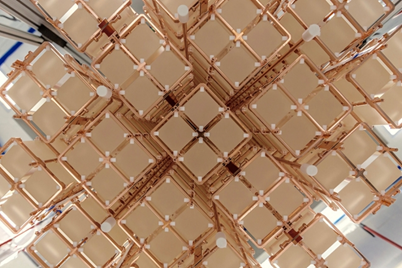
T2K
National responsible: Maria Gabriella Catanese (Bari)
Local responsible: Fabiana Gramegna
T2K (Tokai to Kamioka, Japan) is a long-baseline neutrino experiment designed to investigate the appearance of electron neutrino in muon neutrino beam (neutrino oscillations). The J-PARC accelerator (Tokai) provides a very intense muon neutrino beam, which travels 295 km and reaches the far detector Super-Kamiokande. The precise knowledge about the initial neutrino beam, essential for the accurate oscillation measurements, is provided by the off-axis near detector ND280. It allows to measure the neutrino and anti-neutrino fraction, the neutrino flavour and the energy spectrum of the non-oscillated beam.
Currently, the CP-violation search is a major goal of the T2K experiment. In order to obtain an accurate measurement of the CP parameter, a vigorous program to upgrade the ND280 is being undertaken and it is expected to significantly reduce the effects of the systematic uncertainties on T2K oscillation analyses. In particular, the P0D subdetector will be replaced by: two horizontal time projection chambers (HA-TPC), a horizontal fully active carbon target in the middle (Super-FGD) and six Time-of-Flight (ToF) planes.
The Legnaro group, in collaboration with the Padova group, is working on the development of the new HA-TPC and on the development of the reconstruction and calibration software. Currently, the tests of the second TPC-prototype are ongoing at LNL.
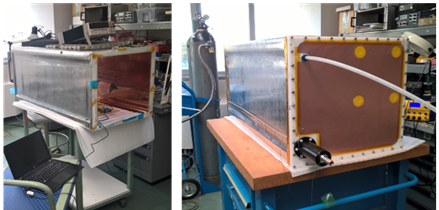
QUAX (and SQMS)
National responsible: Giovanni Carugno (Padova)
Local responsible: Giuseppe Ruoso
The QUaerere AXions (QUAX) experiment is a direct search for galactic Dark Matter (DM). It has started as an R&D study for the development of axion DM detector based either on the axion to photon (QUAXaγ) or axion to magnon (QUAXae) conversions in radio frequency (rf) cavities. The full scale QUAXaγ experiment is funded while QUAXae is still in a R&D phase. Two detectors are being built at Legnaro and Frascati National Laboratories of INFN, and the collaboration includes members from LNL, LNF and the INFN sections of Padova, Salerno and Trento. The collaboration also participates to the joint INFN and FNAL initiative “Exploiting Quantum Technologies for detection of BSM Particles and signals from Very Early Universe” of the SQMS center for advancing quantum science and technology.
Axions are hypothetical light bosons introduced to resolve the strong CP problem in quantum chromodynamics (QCD) and can be the main constituent of galactic DM halos. They couple with static magnetic field or interact with electron spins in a magnetized material. In both cases, this result in the emission of electromagnetic radiation in the rf range. By using a microwave cavity with very high quality factor and very sensitive rf detectors it would be possible to measure such radiation. To achieve a cosmological relevant sensitivity, both approaches require the cooling down to ultra-low temperature of cavity, magnetized samples, and the use of ultra-low noise microwave amplifiers (Josephson Parametric Amplifier, Travelling Wave Amplifier or Transmon Qbit Photon Counter).
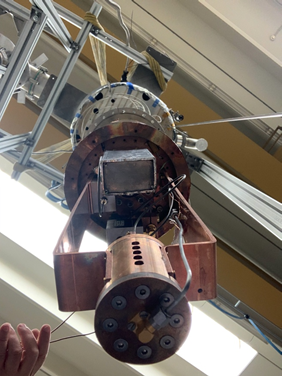
DARKSIDE
National Responsible: Gemma Testera (Genova)
Local Responsible: Oscar Azzolini
The DarkSide collaboration is an international affiliation of universities and labs seeking to directly detect dark matter in the form of weakly interacting massive particles. The collaboration is planning, building and operating a series of liquid argon time projection chambers (TPCs) that are employed at the Gran Sasso National Laboratory in Assergi, Italy.
DarkSide-50 is a dual-phase argon Time Projection Chamber (TPC), developed for use in a search for direct evidence of dark matter. The experiment is hosted in Hall C of the Laboratori Nazionali del Gran Sasso, underneath the Gran Sasso e Monti della Laga National Park, and has been collecting data since October 2013.
DS-20k is a two-phase LAr detector with a 50 tonnes active volume. It will be installed in LNGS Hall-C in 2022 and will either detect WIMP dark matter or reach a 90% exclusion sensitivity to WIMP-nucleon cross sections of 7.4×10-48cm2 at the mass of 1TeV/c2.
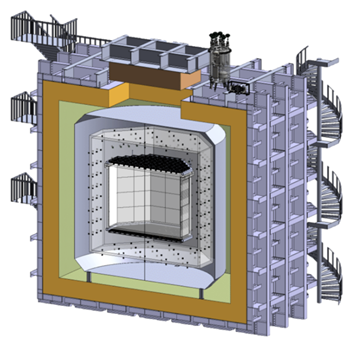
VBM@CERN
National Responsible: Guido Zavattini (Ferrara)
Local Responsible: Giuseppe Ruoso
VMB@CERN (Vacuum Magnetic Birefringence at CERN) is an optical polarimeter whose aim is to directly measure, for the first time, the low energy light-by-light interaction. Such an effect is due to quantum vacuum fluctuations (as predicted by QED) or to low mass particles having a two-photon vertex, a remarkable example being the axion, which is also a dark matter candidate. In the proposed experimental configuration, the vacuum becomes birefringent in the presence of a strong magnetic field, and a laser beam changes its polarisation state by traversing it. The birefringence predicted by QED is Δn=4×10-24 for B = 1 T. VMB@CERN is the successor of PVLAS, an experiment that was in operation first at LNL and then in Ferrara. PVLAS at the moment hold the best limit on such an intriguing effect. During the period 2020-2021 an R&D phase is taking place at the Physics Department and INFN Section of Ferrara, with the aim of building a demonstrator using a novel detection scheme. In case of positive results, the demonstrator will be moved to CERN and integrated with a spare LHC magnet. This last phase should take place in the years 2022-2025.
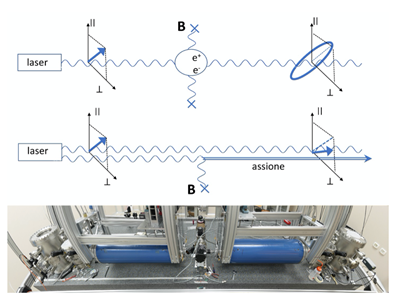
Vacuum is classically defined as an empty region of space with no matter and radiation. According to quantum physics, far from being empty, the vacuum is filled with quantum fluctuations, which are temporary random change in the amount of energy in a point in space, as prescribed by Heisenberg’s uncertainty principle. Thus, quantum vacuum must have physical properties that can be tested in dedicated experiments.